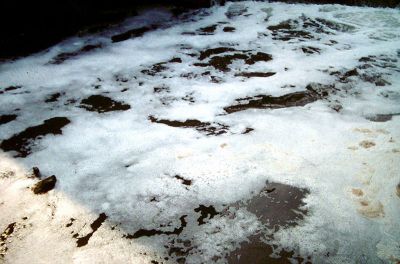New biofilter can remove toxic elements

Environmental pollution, fot. By F Lamiot (Own work) [GFDL (httpwww.gnu.orgcopyleftfdl.html) CC-BY-SA-3.0
Researchers have developed a novel biofilter system that can eliminate nitrogen and phosphorus from wastewater without the presence of organic matter.
Nitrogen and phosphorus are two of the most common elements found in
industrial and agricultural wastewater today. Because these elements are
causing environmental problems, there is a need for technologies that
can reclaim them from waste streams.
The EU-funded PSNOP project thus set out to develop and test a
natural pyrrhotite (a type of mineral) simultaneous nitrogen and
phosphorus (PSNOP) biofilter. It works by colonising pyrrhotite
particles with bacteria that can remove nitrogen from wastewater.
The project began by culturing denitrifying (nitrate-reducing)
bacteria from anaerobic sludge of a wastewater treatment plant. Over
several days, this process produced a thriving colony of denitrifying
bacteria that could be used to 'seed' pyrrhotite particles.
Researchers also showed that pyrrhotite (without a bacterial
biofilm) naturally removed up to 99 % of phosphorus from wastewater over
24 hours. This worked effectively in different acidity conditions (pH
4–12), and the efficiency improved as the temperature increased.
PSNOP then created several biofilters by allowing the denitrifying
bacteria to colonise pyrrhotite and limestone, or a combination of the
two. These were tested for their ability to remove phosphorus and
nitrogen simultaneously from wastewater.
Overall, the pyrrhotite-only biofilter performed best. The
limestone-only biofilter could not remove nitrogen, and the mixed
biofilter had limited capacity to remove both elements. A major success
is that the PSNOP biofilter could remove 85–90 % of phosphorus and
nitrogen when operating continuously.
This new technology could find application as a tertiary treatment process in wastewater treatment plants.
published: 2015-02-03

